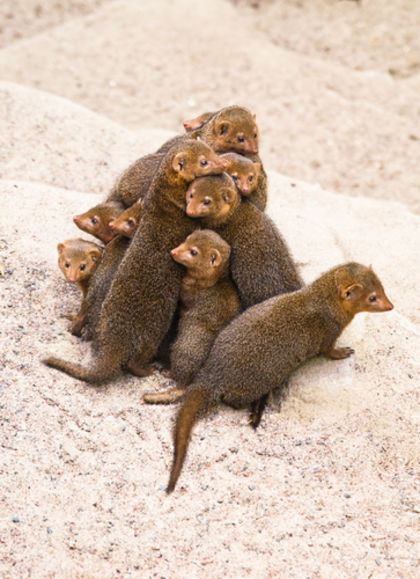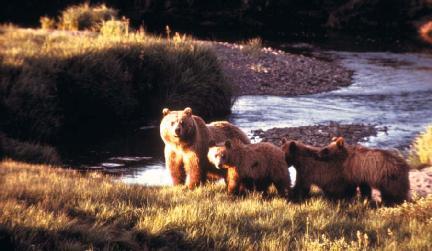Mammals

More than 4,000 species of living mammals belong to the vertebrate class Mammalia . This diverse group of animals has certain common features: all have four legs, bodies covered by hair, a high and constant body temperature, a muscular diaphragm used in breathing, a lower jaw consisting of a single bone, and three bones in the middle ear. In addition, all female mammals have milk-producing glands. There are three living subclasses of mammals: the Monotremata (egg-laying mammals), the Marsupialia (pouched mammals), and the Placentalia (placental mammals).
Mammals range in size from bats, some of which weigh less than an ounce, to the blue whale, which weighs more than 200,000 pounds. Mammals are found in arctic climates, in hot deserts, and in every terrain in between. Marine mammals, such as whales and seals, spend most of their time in the ocean. Mammals are not as numerous and diverse as other classes of animals, such as birds or insects. Nonetheless, mammals have a tremendous impact on the environment, particularly because of the activities of one species of mammal: humans.
Adaptations
Species of mammals have developed a variety of adaptations in response to the different environments in which they live. Mammals in cold climates have insulating layers consisting of a thick coat of fur or a thick layer of fat (blubber). This layer helps retain body heat and keeps the animal's body temperature constant. Some mammals that live in deserts survive by special adaptations in their kidneys and sweat glands that allow them to survive when only very small amounts of water are available to them. Other adaptations for survival in extreme climates include hibernation (a state of winter dormancy) or estivation (summer dormancy). These responses make it possible for the animal to conserve energy when food supplies become scarce.

Care and development of the young
The care of the young animals is notable among mammals. Born at an average of 10 percent of its mother's weight, mammalian young grow rapidly. The protection the young receive from one or both parents during the early stages of their lives enables mammals to maintain a strong survival rate in the animal kingdom.
The subclass Placentalia contains the majority of living mammals. The embryo of placentals develops in the mother's uterus (womb), is nourished by blood from the placenta (an organ in the uterus), and is retained until it reaches an advanced state of development. The young of the Marsupialia , by contrast, develop inside the uterus of the mother, usually with a placenta connected to a yolk sac. Young marsupials are born in a very undeveloped state and are sheltered in a pouch that contains the nipples of the milk glands. Kangaroos, wallabies, and most Australian mammals are marsupials, as is the opossum of the Americas.
The Monotremata have hair and secrete milk like other mammals, but they lay eggs. Monotremes in Australia include the duck-billed platypus and two species of spiny anteaters.
its for a project at scool assigned to 3057 students so alot of ppl r looking 4 the some thing
However, this information should general and exhaustive in each of the three subtopics that you've partitioned it. Otherwise, I've gained from the adaptation part (though insufficiently), and I say 'thanks a lot!'.
Not enough information, more should be added